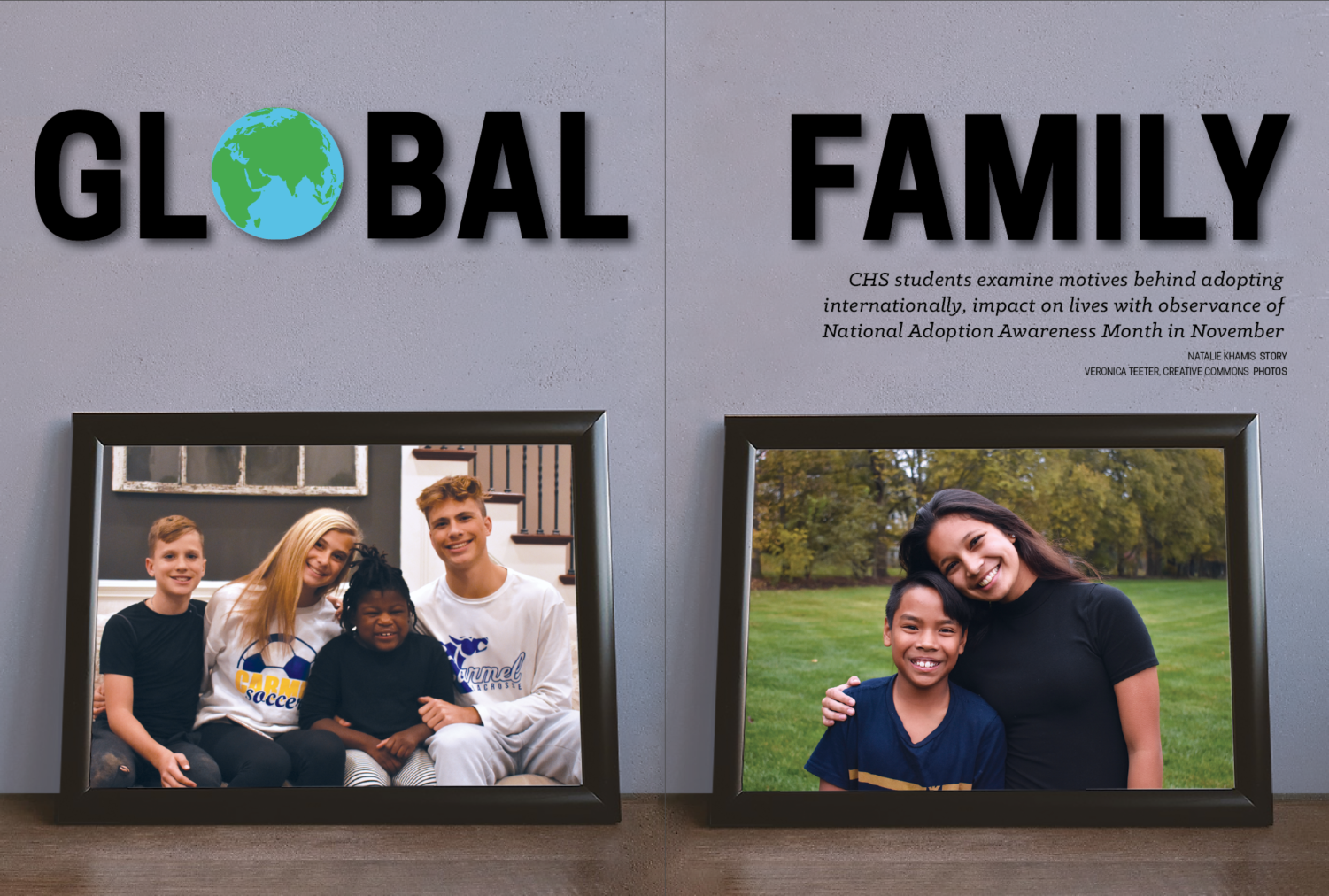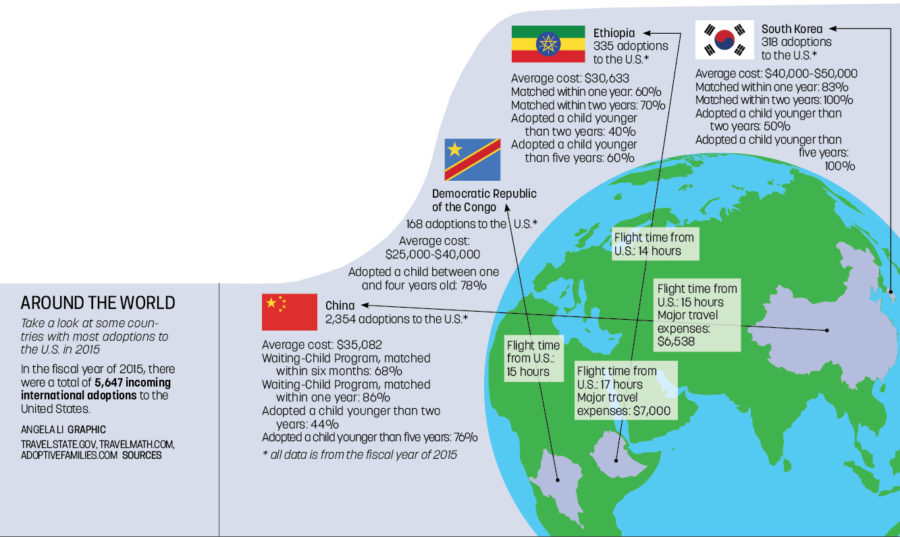Your donation will support the student journalists of Carmel High School - IN. Your contribution will allow us to purchase equipment and cover our annual website hosting costs.
Global Family: CHS students examine motives behind adopting internationally, impact on lives with observance of National Adoption Awareness Month in November
November 16, 2018
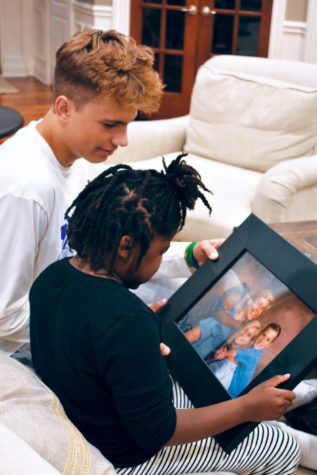
TIME FLIES: Junior Gabe Quigley and his younger sister, Metta, look at a family photo of them with their siblings,
Maddie and Matthew. Quigley said, “If you go through the experience, you get to see the true blessings of (adoption) and how it can impact so many people’s lives. You come out of it with a new understanding of how complex the world is.”
For junior Gabe Quigley, the adoption of his younger sister Metta six-and-a-half years ago was more than an opportunity to expand his family; it was a chance to help. According to the United Nations Organization Stabilization Mission in the Democratic Republic of the Congo (MONUSCO), a string of rebel attacks in 2012 infiltrated Metta’s home country, the Democratic Republic of the Congo (DRC), killing children as young as two months old.
After hearing of these attacks, Quigley’s family wanted to find a way to help the victims of the DRC. Quigley said his family chose to adopt a Congolese child to give him or her a life away from violence and grief.
“My parents felt helpless living in such an affluent community where children such as my sister Metta were suffering in a war-stricken country like the Congo,” Quigley said. “In Congo, they were in the middle of a civil war and the child mortality rate was increasing and we just fell in love with Metta as we learned about her and her story. As soon as we saw pictures of her, we knew we loved her.”
When it comes to international adoption, Quigley’s family is not alone. According to the Annual Report on Intercountry Adoptions, 4,714 adoptions from other countries to the United States occurred in 2017. More than 1,900 out of the 4,714 adoptions were from China—the top child-sending country to the United States.
In 1976, Michael Dukakis, governor of Massachusetts at the time, proclaimed the first week of November as “Adoption Week” to showcase the need for more adoptive families in the United States to care for the children in foster-care system. In 1998, President Bill Clinton extended “Adoption Week,” establishing it as a national event observed throughout the month of November.
Meg Sterchi, executive director of Adoptions of Indiana, said families choose to adopt for a variety of different reasons. The majority of cases she has seen are of couples who are having trouble conceiving a child. However, she also said she has seen cases similar to that of the Quigleys, in which people are adopting children from developing countries to give those children a better quality of life.
 Jackie Hur
Jackie Hur
“Other times, families have a desire to adopt because they know that there are children who need help, who do not have families,” Sterchi said. “Sometimes families have a passion for a certain country and sometimes they recognize that if (families) don’t step in to help, that child may not have anyone to take care of them as they grow up.”
While Adoptions of Indiana is an adoption agency that primarily takes on local cases, it has partnered with Spence-Chapin, a nonprofit adoption organization, to create the South African Program. According to Sterchi, the South African Program takes homeless children—the majority of them HIV positive—living in unruly conditions with no access to treatment. This program gives the children with HIV the treatment they need to be able to live a normal life by providing shelter and other resources.
“It’s beautiful to see these kids be able to participate in sports and other activities while having a typical American family lifestyle. They wouldn’t be able to get the right treatment if they hadn’t found a family that could successfully attend to their needs,” Sterchi said.

PUPPY PLAYTIME: Junior Ana Mercado and her younger brother, James, pet their dog. According to Mercado, her family decided to adopt from the Philippines because her dad is Filipino.
Similar to Quigley’s family, junior Ana Mercado and her family decided to adopt a child internationally. Mercado, who is half Filipino, said her father wanted to adopt a child from the Philippines because he wanted to help a child escape the poor conditions that he faced growing up.
“My father grew up in the Philippines, so he knew beforehand the conditions there. The love he has for his country and his desire to better a child’s life in the Philippines was why he felt so strongly about adopting,” Mercado said. “My parents were like, ‘Hey, we probably should adopt over there because they need some help.’”
While adopting internationally can help children living in poor conditions find the support and resources they need, Sterchi said it can benefit the families as well, by giving them a child to love and take care of.
“You have the opportunity to give love to a child and connect with a child’s life because sometimes you are not able to become parents,” Sterchi said. “It’s not always necessarily wanting to save a child that is the main focus of some couples, but the desire to become parents is satisfied when adopting internationally or locally.”
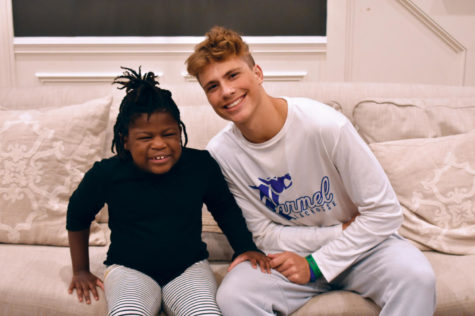
LOVE IN A NEW LIGHT: Junior Gabe Quigley poses for a photo with his younger sister, Metta. According to Quigley, Metta has opened the eyes of his family to the world.
According to Mercado, adopting her brother from the Philippines has inspired her family to apply the Filipino culture in their everyday lives. The Mercado family has incorporated many Filipino traditions such as having a full Filipino breakfast on Christmas morning in order to help make her brother’s transition from the Philippines to the United States easier.
“You get to see this whole other culture when raising a child from a different country develop in your own home,” Mercado said. “It’s amazing to feel a part of someone else’s lifestyle and see how different a typical American lifestyle is compared to someone who lived in whole different country.”
Unlike the Mercado family, Quigley said his sister’s culture has not directly impacted his family’s life; however, he said adopting his sister from the DRC has sparked his interest in learning about the different countries and cultures that make up today’s world.
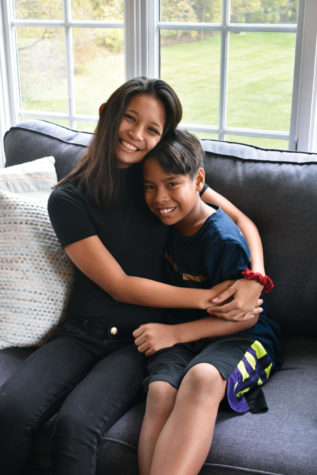
CULTURAL CHANGES: Junior Ana Mercado poses for a photo with her younger brother, James. Mercado said adopting her brother from the Philippines has encouraged her family to further integrate the Filipino culture into their daily lives by, for example, having a full Filipino breakfast on Christmas morning.
“Me specifically, I didn’t know much about the Congo. At that time, I didn’t even realize that other countries were not as developed as the (United States) was, so Metta inspired me to research more about it,” Quigley said. “It’s crazy to learn about third-world countries and the stuff that happens over there. Honestly, if Metta was not a part of our life, I wouldn’t have given much thought to other developing countries.”
Although their respective siblings were raised in different environments, Quigley said his sister’s background has never impacted how he has treated or viewed his adoptive sibling.
“Metta is very loud, and she’s always giving people a mouthful of what she thinks and acts like any other of my biological siblings,” Quigley said. “We have always treated her like a biological sibling because she is one of our own. Her coming from another country does not change this fact.”
Agreeing with Quigley, Mercado said, “James is my younger brother, no doubt about it. There are some times I forget that James is adopted because I’ve grown up with him for so many years now, and he acts like a typical little brother.”
Whether it is through adoption or by other means, Quigley said he believes finding ways to positively change another child’s life is important. Living in an affluent community, Quigley said others often overlook the fact that children in other regions of the world are struggling to find the resources they need to survive. Through adoption, Quigley’s family has been able to support Metta in ways that others in the DRC were not able to.
“Adopting gives kids a renewed chance at a better life. A huge plus is that you can give kids without families the love that they are lacking at the moment,” Quigley said. “It’s a beautiful thing when you’re changing (a child’s) life drastically by giving them a second chance at the life they deserve.”
